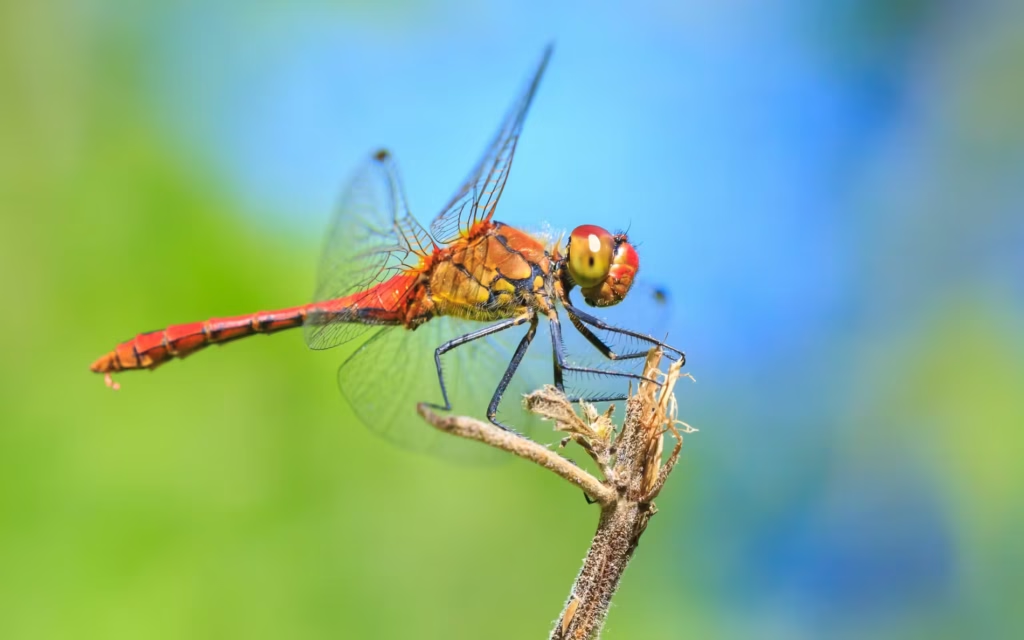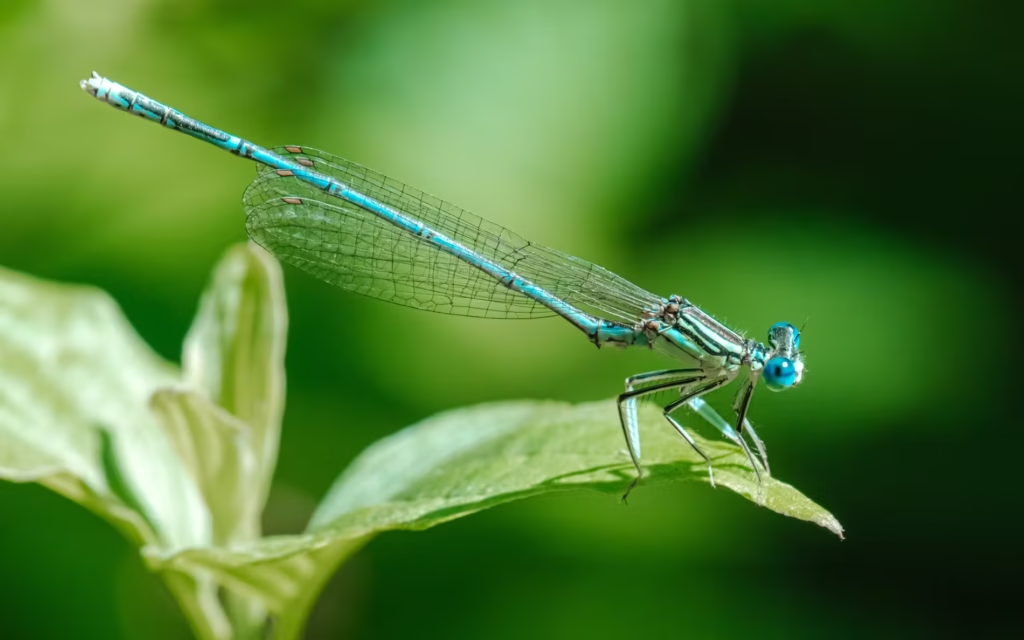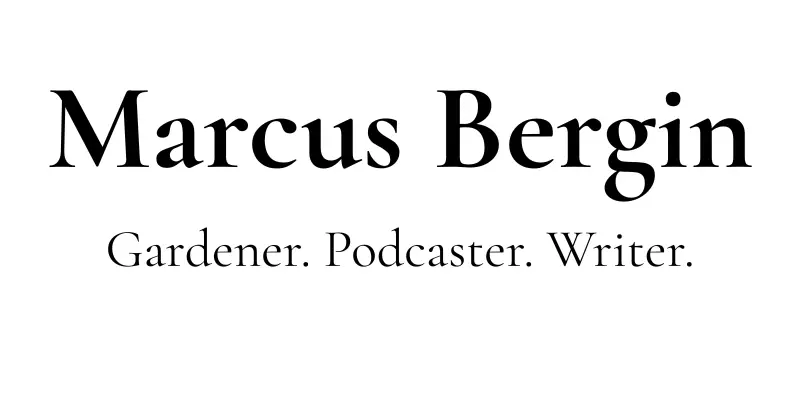
Dragonflies in the Garden: Natural Mosquito Control with Beauty and Balance
“The dragonfly brings dreams to life, not just with wings, but with what it keeps at bay—mosquitoes most of all.”
When the weather warms and the evening air turns still, gardeners everywhere, especially in warmer regions like Dallas, TX, know what’s coming next: the unmistakable whine of mosquitoes.
While sprays, candles, and citronella plants all get their moment in the sun, an age-old ally glides just above the garden with silent precision: the dragonfly.
But can we really attract these magnificent mosquito predators to our own gardens? And if so, what plants support their lifecycle, especially if you’re gardening in heavy clay or using containers?
Let’s take a deeper look.
Why Dragonflies Are the Gardener’s Friend
Dragonflies are voracious insectivores, with both the adults and their aquatic larvae (known as nymphs) feeding heavily on mosquitoes and other flying pests. A single dragonfly can eat hundreds of mosquitoes per day, catching them mid-flight with remarkable agility.
Here’s why they’re such effective natural pest control:
-
Dragonfly nymphs live in water and devour mosquito larvae before they hatch.
-
Adult dragonflies consume mosquitoes, midges, flies, and even gnats.
-
They are territorial, meaning if they like your garden, they may stay and patrol regularly.
What Dragonflies Need: Habitat Basics
To invite dragonflies, you need to offer more than just plants—you need a home. Here’s what they’re looking for:
1. Still Water
Dragonflies lay their eggs in still or slow-moving water. Ponds, water bowls, or even repurposed containers can work if they:
-
Are at least 18 inches deep (to protect nymphs from predators and temperature swings)
-
Have vertical aquatic plants for egg-laying
-
Avoid fish (which eat nymphs)
-
Don’t use chemical treatments
In small gardens or container settings, a whisky barrel pond or a large ceramic pot sunk into the soil can do wonders.
2. Emergent and Floating Plants
Dragonflies need plants that emerge from water so the nymphs can climb up and transform into adults. Key species include:
-
Horsetail reed (Equisetum hyemale) – Upright and architectural
-
Water iris (Iris laevigata or I. versicolor) – Adds colour and structure
-
Pickerel rush (Pontederia cordata) – Pollinator-friendly as well
-
Water lilies (Nymphaea spp.) – Floating cover to protect nymphs and cool water

The Shade Gardening Podcast
Clay-Loving and Container-Friendly Plants That Support Dragonflies
If you’ve got heavy clay soil or you’re gardening in containers, there’s still plenty you can grow to encourage dragonflies—especially as adults like to perch, rest, and hunt from sunny spots.
Here are some good choices:
1. Joe-Pye Weed (Eutrochium purpureum)
-
A magnet for butterflies and dragonflies
-
Tolerates moist clay and does well in large pots
-
Tall, with soft purples in late summer
2. Swamp Milkweed (Asclepias incarnata)
-
Loves clay and damp conditions
-
Supports a wider web of insect life
-
Attractive to dragonflies hunting for prey
3. Black-Eyed Susan (Rudbeckia fulgida)
-
Easy-care, bright blooms
-
Good landing platforms
-
Grows well in clay or containers
4. Blue Flag Iris (Iris versicolor)
-
Native to much of North America
-
Thrives in wet clay
-
Beautiful and bold around water features
5. Sedges (Carex spp.)
-
Many native sedges tolerate clay and moist soil
-
Provide soft cover and structure for emerging insects
6. Yarrow (Achillea millefolium)
-
Flat flower heads are great dragonfly perches
-
Drought-tolerant once established, even in heavier soils
7. Bee Balm (Monarda didyma)
-
Works well in pots or clay-rich beds
-
Adds vivid colour and supports pollinators, which attract dragonflies indirectly
Garden Design Tips for Dragonfly Habitat
If you’re building a dragonfly-friendly area, try this:
-
Create a water feature with gentle edges and vertical planting
-
Add flat stones or twiggy perches near water for sunbathing
-
Mix tall and short plants so dragonflies can rest at different heights
-
Avoid pesticides—they’ll reduce prey and harm dragonflies directly
In a container setup, a large glazed pot with a few water plants and surrounding upright perennials can become a tiny dragonfly haven, even on a patio.
Fun Facts and Figures
-
Over 5,000 species of dragonflies and damselflies exist worldwide
-
Dragonfly nymphs can live up to 2 years underwater before maturing
-
A dragonfly’s vision spans nearly 360 degrees, making it a perfect hunter
-
Some species can reach speeds of 30 mph in flight!
The Takeaway
Creating a dragonfly-friendly garden isn’t just about mosquito control, it’s about inviting balance, movement, and beauty into your outdoor space. Whether you’ve got sticky clay soil, a small patio, or a grand garden in Dallas, there’s always room to make space for these dazzling, darting guardians of the sky.
So next time you spot one hovering by, take it as a compliment, your garden’s doing something right.
Want More?
For every post I share in the Facebook group, I’m also writing a deeper article to go alongside it, something you can settle down with when you’ve got a quiet moment and a cuppa. If you found this helpful and want to see more practical gardening advice, join us over in my gardening groups on Facebook, Gardening with Marcus, Shade Gardening or Bishops Cleeve Gardeners or browse more articles at marcusbergin.com.
Happy Gardening
